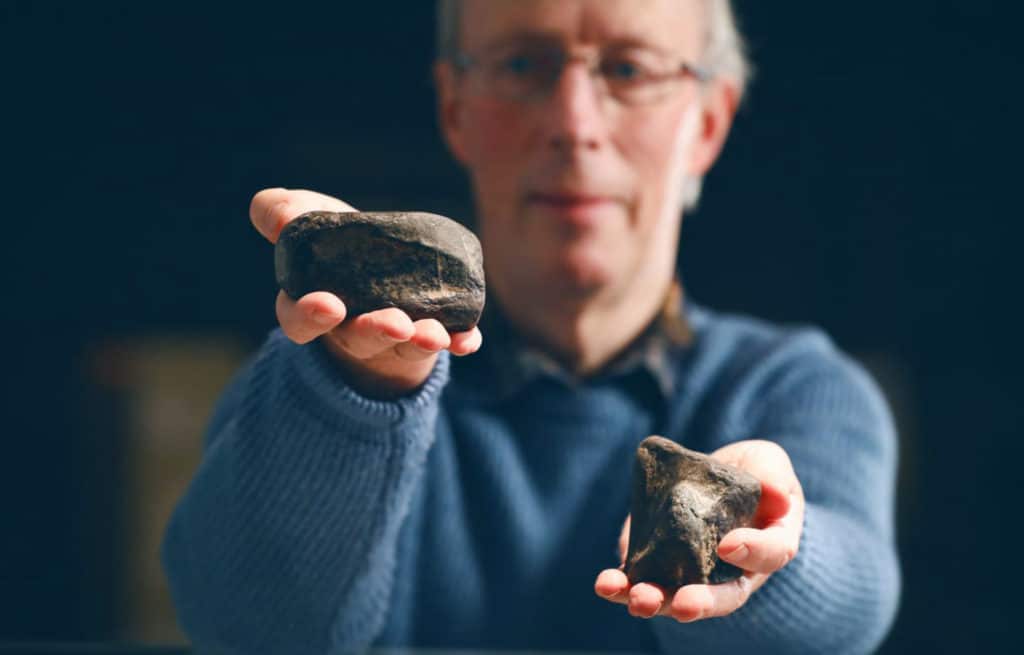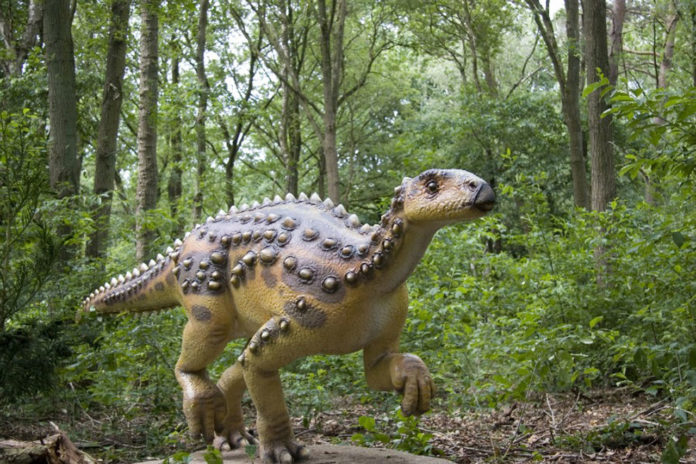A team of experts from the University of Portsmouth and Queen’s University Belfast has recently discovered the only dinosaur bones that perhaps swept out to sea, alive or dead, sinking to the Jurassic seabed where they were buried and fossilized. These two fossil bones were found by late schoolteacher and fossil collector Roger Byrne in County Antrim of Northern Ireland.
Analysis has confirmed they are from early Jurassic rocks found in Islandmagee, on the east coast of County Antrim. This discovery is a part of a larger project to document Jurassic rocks in Northern Ireland and draws on many fossils in Ulster Museum’s collections.
Dr. Simms, National Museums NI, said: “This is a hugely significant discovery. The great rarity of such fossils here is because most of Ireland’s rocks are the wrong age for dinosaurs, either too old or too young, making it nearly impossible to confirm dinosaurs existed on these shores.”
Initially, it was expected the fossils were from the same animal; however, the group was astonished to find that they were from two completely different dinosaurs.
Scientists used high-resolution 3D digital models of the fossils for the analysis of bone fragments. They recognized the type of dinosaur from which each came. One is part of a femur (upper leg bone) of a four-legged plant-eater called Scelidosaurus. The other is part of the tibia (lower leg bone) of a two-legged meat-eater like Sarcosaurus.

Robert Smyth from the University of Portsmouth said, “Analysing the shape and structure of the bones, we realised that they belonged to two very different animals. One is very dense and robust, typical of an armoured plant-eater. The other is slender, with thin bone walls and characteristics found only in fast-moving two-legged predatory dinosaurs called theropods.”
“Despite being fragmentary, these significant valuable insights into a crucial period in dinosaur evolution, about 200 million years ago. It’s at this time that dinosaurs really start to dominate the world’s terrestrial ecosystems.”
Professor David Martill said, “Scelidosaurus keeps on turning up in marine strata, and I am beginning to think that it may have been seaweed-likeimal, perhaps even eating seaweed like marine iguanas do today.”
Journal Reference:
- Michael J.Simms et al. First dinosaur remains from Ireland. DOI: 10.1016/j.pgeola.2020.06.005
